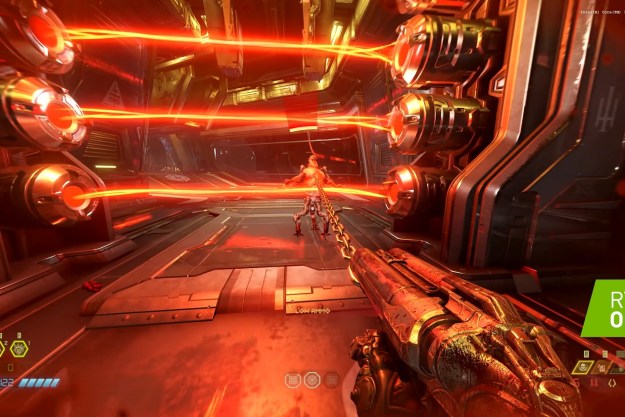Nvidia’s Computex 2019 press conference is expected to kickoff the annual information and communications technology show.
The press conference itself will occur a day before the actual start of Computex 2019, which will begin on May 28. Nvidia’s press conference is scheduled for May 27 at 2:30 pm, local time, in Taipei, Taiwan.
Here’s the rundown on everything you need to know about Nvidia’s press conference at Computex 2019 — including what to expect and when and how to watch it.
How to watch
Nvidia’s Computex 2019 press conference will be held on Monday, May 27 from 2:30 p.m. – 4:00 p.m. in Taipei. For those interested in streaming the conference live, be sure to tune into the conference here via our soon-to-be embedded video (above) on Monday, May 27 at 2:30 a.m. ET or Sunday, May 26 at 11:30 p.m. PT.
You can also follow along on Nvidia’s GeForce Twitter feed.
What to expect
There haven’t been very many official details released about Nvidia’s upcoming Computex 2019 press conference. Nvidia’s main webpage on the subject only provided a vague statement, saying that they “will unveil the latest technologies shaping today’s business.” The event page for the press conference on the Computex Taipei website provided the same level of sparse detail, but also managed to mention a few of the possible topics covered in the press conference. Namely, the press conference may cover the “latest technologies in A.I., content creation, gaming, and more.
Speaking of gaming, Nvidia may have dropped a hint recently about a possible forthcoming GeForce announcement. Nvidia uploaded a 16-second teaser video on YouTube titled “Something super is coming…” and it was hashtagged with GeForce. Considering the timing of the video’s release and the hashtag, it’s possible that, as Tom’s Hardware notes, Nvidia could use the Computex 2019 press conference to announce the development of a new ‘super’ GeForce graphics card. The video doesn’t offer much more detail than the word “super” and so how that would play out in a new graphics card is up for debate.
And if a new GeForce graphics card is on the agenda for next week’s press conference, it’s also possible that it might not be the only Nvidia
Considering it’s been about two years since the last time Nvidia released a new line of graphics cards, it seems like the technology company would be on the right track if they did decide to at least announce the development of two new-ish
Editors' Recommendations
- Nvidia RTX 50-series graphics cards: news, release date, price, and more
- Nvidia just made GeForce Now so much better
- Nvidia just fixed a major issue with its GPUs
- How to watch Nvidia’s launch of the RTX 4000 Super today
- How Nvidia and AMD could make Windows laptops feel like MacBooks



